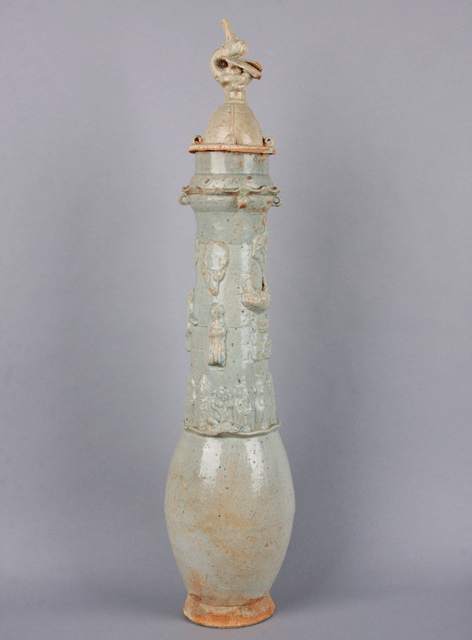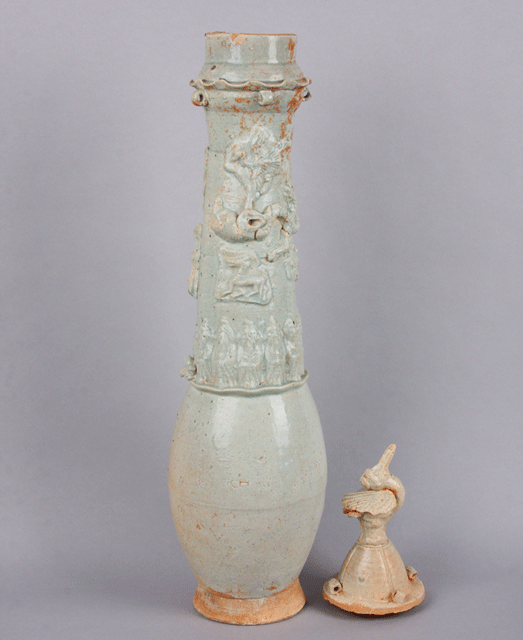
2012.91.69, Qingbai ware funerary jar with lid, Song dynasty (960–1279)
Eason Eige Collection; photo by B. Bernard

2012.91.69, Qingbai ware funerary jar with lid, Song dynasty (960–1279)
Eason Eige Collection; photo by B. Bernard
Although the glaze on this jar has a blue cast, we are including with the green glazes to fit Chinese nomenclature. The usual name, qingbai (青白), can be translated as "greenish white" ware, and the alternate name, yingqing, can be translated as "shadow green." Different cultures often define colors in different ways! Qingbai is a true porcelain made from kaolin. Tall, narrow lidded jars such as this one were made in pairs; they were filled with rice and included in burials of well-off individuals.
The next photo shows the jar with the lid removed. The jar is a bit crude, and
the molded details on the
upper jar are not very clear, which shows that this was not a "top of the line"
funerary jar. Then as now, funeral costs could very greatly depending on a
family's circumstances. The very rich could afford more carefully made jars
on which the molded details were more extensive and elaborate. Not
that anyone cares, once they're dead! Anthropologists like to point out that
funerals are much more about the living than the dead.

Photo by B. Bernard
See source code for copyright information. Page last revised on January 11, 2016. Please report problems to toh@unm.edu